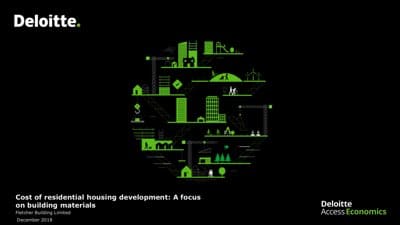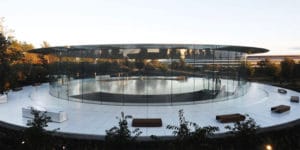Fletcher-commissioned Deloitte report shows building material costs are low…….
The cost of building materials in New Zealand account for between 16-24 percent of the cost of residential housing development costs, depending on the type of building and location, according to a study by accounting firm Deloitte.
Fletcher chief executive Ross Taylor says in a statement that the Deloitte report was a response to the “lack of fact-based research on what is driving costs in New Zealand. We believe it provides valuable information to help move the discussion forward and work on solutions to address housing affordability.” Read the full report below:








